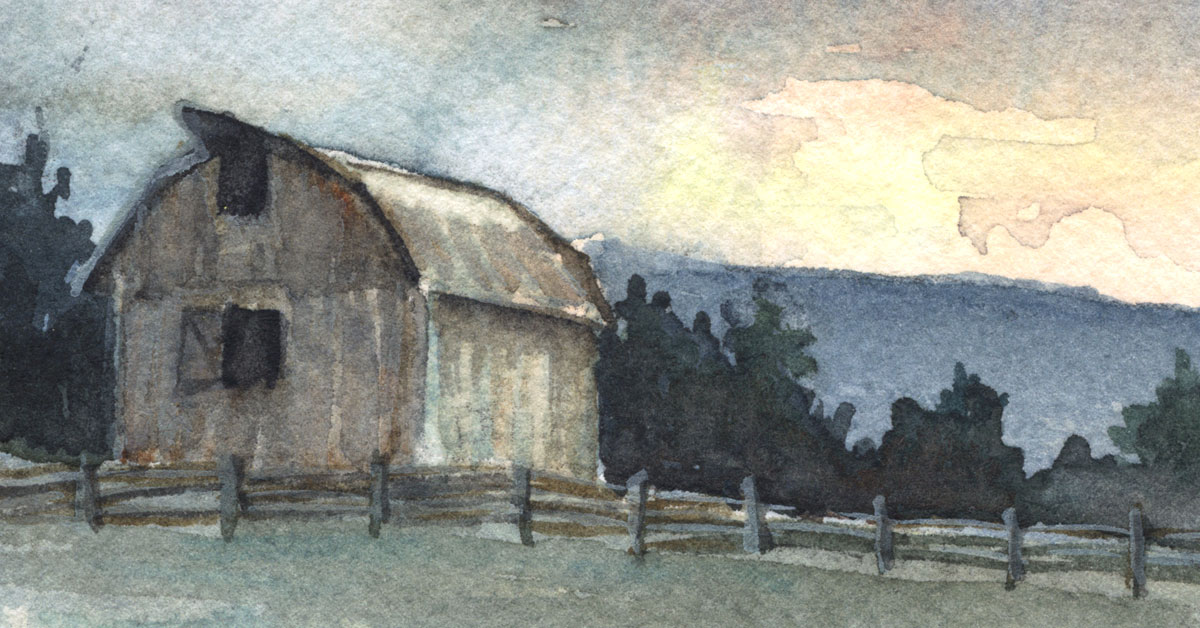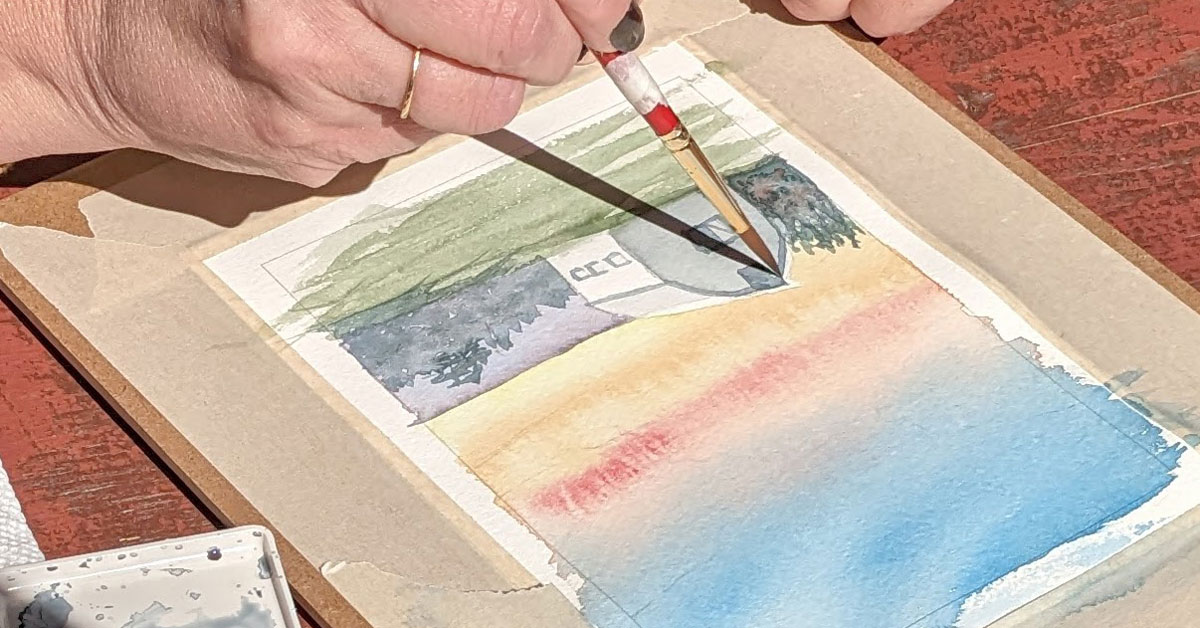
I recently was chatting with a person who had taken one of my beginner watercolor classes, and she told me that she’s always looking for barns now. We laughed about it, but I was sincerely pleased to hear her say that.
Some of the landscape projects we had worked on in her class included barns. That’s intentional on my part, as I want the scenes to be local and recognizable to the students (and we have a lot of barns nearby). I also tell the students that old barns and old houses are great painting subjects because nothing is straight on those buildings. Any somewhat wobbly depictions just add to the painting’s character.
But the real reason I was pleased with the student’s comment was because she was LOOKING. And that’s part of my mission.
I’m a realist painter, and I prefer to draw inspiration from the places and scenes that are close at hand …. paint what you know, paint what you love. I’m also hoping that when someone from this area looks at one of my paintings they will recognize the scene, but will also think about that place in a different way after seeing it as the subject of a painting.
When I was a child, a regional artist worked with my county school system and spent part of the school year rotating around to the different elementary schools. I was in junior high at the time, so I missed out on the opportunity to spend time with this artist, and I was a bit sore about it. As part of the program, the artist created paintings to represent each elementary school community, and then prints were made of those paintings. Prints sales were used to help support the program.
In the 1980s, the community surrounding my elementary school had seen better times, like most places in West Virginia. There were several wooden buildings across the creek that once had housed stores, etc., but now were closed up and deteriorating, and there were old cars parked around them, too. It was not a “pretty” scene.
The artist, however, looked at the scene differently. Her painting was a realistic rendering of the scene, but somehow it all looked different. There was a sense of faded glory and quiet dignity in her painting, and it struck me.
After seeing her painting, I was never able to see the corner at the school’s entrance in the same way …. it had changed how I looked at the place and the community. I had learned that a kind of beauty was still evident in that place, if I was willing to look closely and keep an open mind.
I was able to study a print of that painting, and prints from the paintings from neighboring communities, for many years after the program ended. They brightened the waiting rooms at my doctor’s and dentist’s office. I enjoyed going there — yes, even to the dentist — just to see those scenes.

So fast forward to the present …. and to my student who told me she was now looking for barns. In a rural place like Hardy County, there are many barns along the roads. But there are also fewer barns now than there had been previously, and the barn used in my lesson was one that had recently disappeared. Places change quickly, so we should not overlook them. My student was now engaged with this part of her daily landscape and would keep those memories alive.
It’s a small thing, yes, but it’s also important, and I’m gratified that my work, in whatever small way, can positively affect how another person engages with the surrounding environment.
